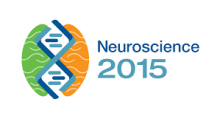
Many of the more than 29,000 attendees of the most recent Society for Neuroscience (SfN) conference in Chicago took advantage of several opportunities to learn more about the exciting research funded by The BRAIN Initiative.
During the weeklong scientific conference (one of the largest in the world), there was a town hall meeting about the BRAIN Initiative featuring federal and non-federal partners, a special lecture presentation by NIH Director Francis Collins, and a session devoted to BRAIN Initiative-funded research. In addition, NINDS staff presented an outreach poster explaining the BRAIN Initiative and highlighting upcoming funding opportunities for interested investigators.
Town Hall
NINDS and the Kavli Foundation co-sponsored a packed town hall meeting to discuss the current state and future goals of the BRAIN Initiative. This event brought together members of five federal agencies—National Institutes of Health, National Science Foundation (NSF), Defense Advanced Research Projects Agency (DARPA), Intelligence Advanced Research Projects Activity (IARPA), and Food and Drug Administration (FDA)—along with four foundations and institutes—Kavli Foundation, Howard Hughes Medical Institute, Allen Institute for Brain Science, and Simons Foundation Collaboration on the Global Brain. Additionally, university partners and other academic networks from around the country showcased their support of the initiative.
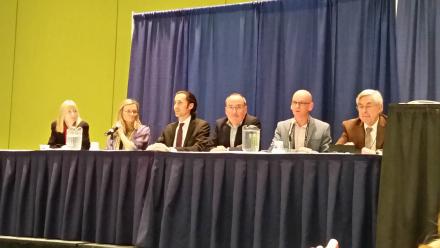
NINDS Director Walter Koroshetz introduced the interactive panel discussions and moderated Q&A sessions throughout the event. Representatives from each of the federal and non-federal partners outlined their organization’s efforts in the BRAIN Initiative and answered questions posed by investigators.
DARPA program manager Justin Sanchez said that even though all of the federal partners have long supported neuroscience research, “The BRAIN Initiative is the glue for bringing together all of the federal agencies. We’re interacting in new ways to bring neurotechnologies to life.”
During the Q&A session, many attendees were interested in the percentage of grants being awarded to young investigators. Each agency emphasized that funding young investigators with new ideas is a high priority, and that the number of early-career investigators who receive BRAIN Initiative grants has increased each year. To help facilitate collaboration among investigators in the BRAIN Initiative, Greg Farber indicated that NIH is considering a “match-making” service while Jim Olds said that NSF is working on a unified web portal for investigators to communicate with each other. Research funded by foundations and institutes complements federal agencies’ efforts, explained Allan Jones, CEO of the Allen Institute for Brain Science; by supporting big science projects and taking a project management approach to each one. “We fund high risk projects that are collaborations between theorists, computer scientists and experimentalists,” said Alyssa Picchini-Schaffer of the Simons Foundation.
To learn about new NIH BRAIN Initiative funding announcements, consult The NIH Guide and the NIH BRAIN Initiative website.
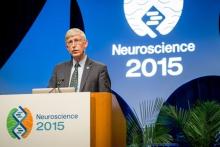
Dr. Collins’ Lecture
At the outset of his talk, “Embracing an Era of Unprecedented Advances in Neuroscience,” NIH Director Francis Collins extolled the virtues of basic science research, pointing specifically to this year’s winner of the Nobel Prize in chemistry characterizing DNA’s repair machinery as a prime example. Basic research, he said, will also be key to the success of the BRAIN Initiative, rather than a focus on finding cures to specific neurological diseases.
Collins then discussed the seven priority areas of the NIH’s efforts in the BRAIN Initiative and said that the first five years of the initiative will be more focused on the development of new tools and techniques for studying the brain and the second five years will be more devoted to discovery-driven science. He also mentioned parallels between the BRAIN Initiative and the Human Genome Project, which he led nearly 25 years ago, including the idea that, like the genome project, success for the brain project will require bringing in experts from a variety of disciplines.
Collins ended the BRAIN Initiative portion of his talk by highlighting a handful of new papers funded by the initiative including a Cell paper about Drop-Seq, a technique for classifying single cells based in their gene expression, and another Cell paper about the three-dimensional reconstruction of neurons.
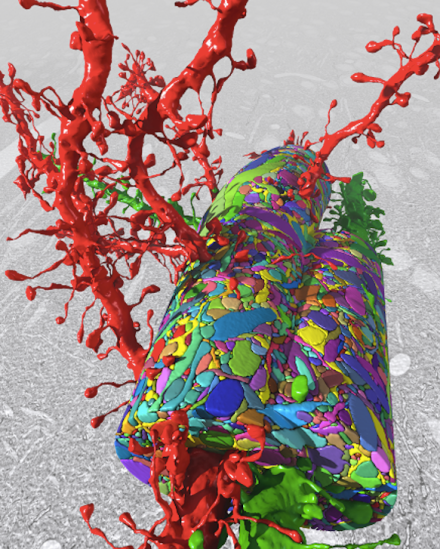
BRAIN session
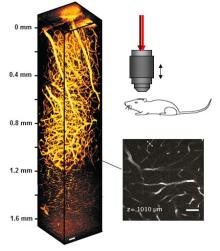
Dozens of neuroscientists got a sneak peek at some of the exciting BRAIN-funded projects at an SfN session called “Early Reports from the BRAIN Initiative Frontline: Advancing Technologies to Accelerate Our Understanding of Brain Function.” Eve Marder, a neuroscientist at Brandeis University and Jane Roskams, Executive Director of Strategy and Alliances at the Allen Institute for Brain Science, hosted the session, which featured four scientists discussing preliminary results from their projects. Chris Xu of Cornell University talked about nonlinear optical imaging of mouse brain structure and function. Alan Jasanoff of MIT discussed noninvasive functional brain imaging at the molecular level. Tim Gardner of Boston University showed off the capabilities of his high-density recording and stimulating electrodes. Hongkui Zeng of the Allen Institute for Brain Science spoke about her efforts to establish a comprehensive and standardized cell type characterization platform.
